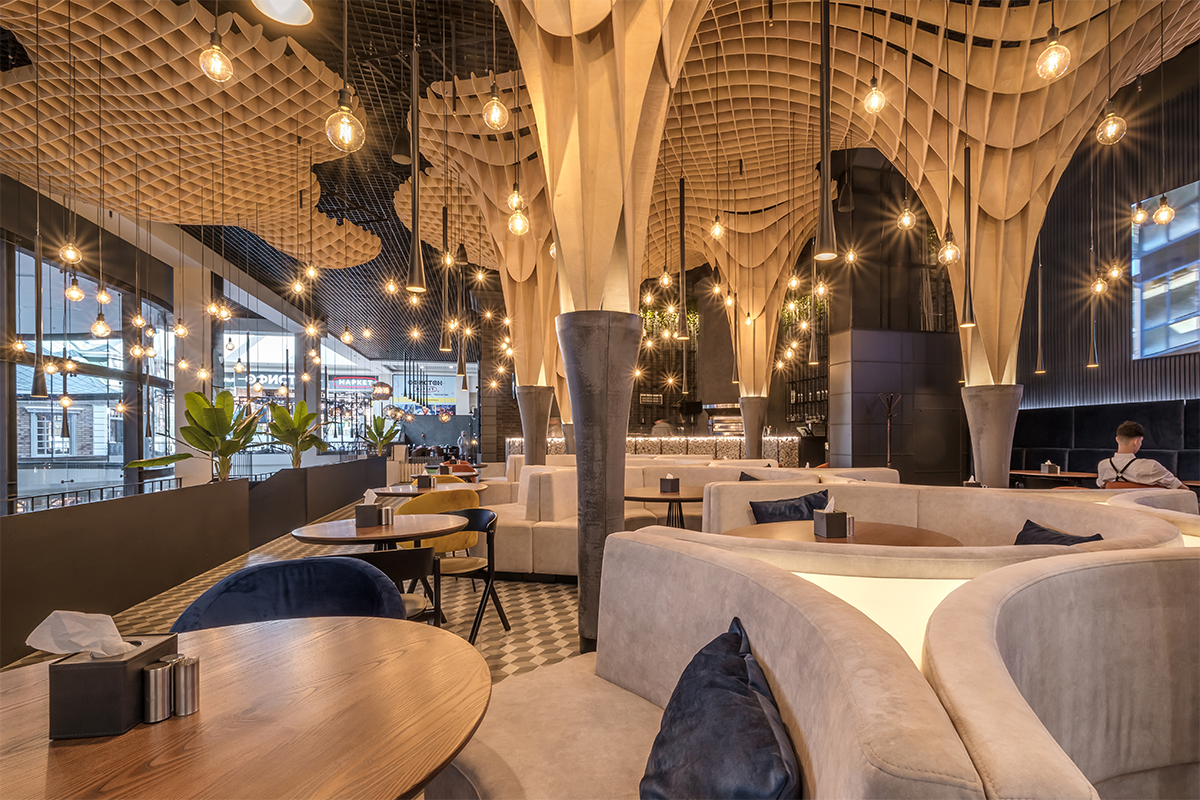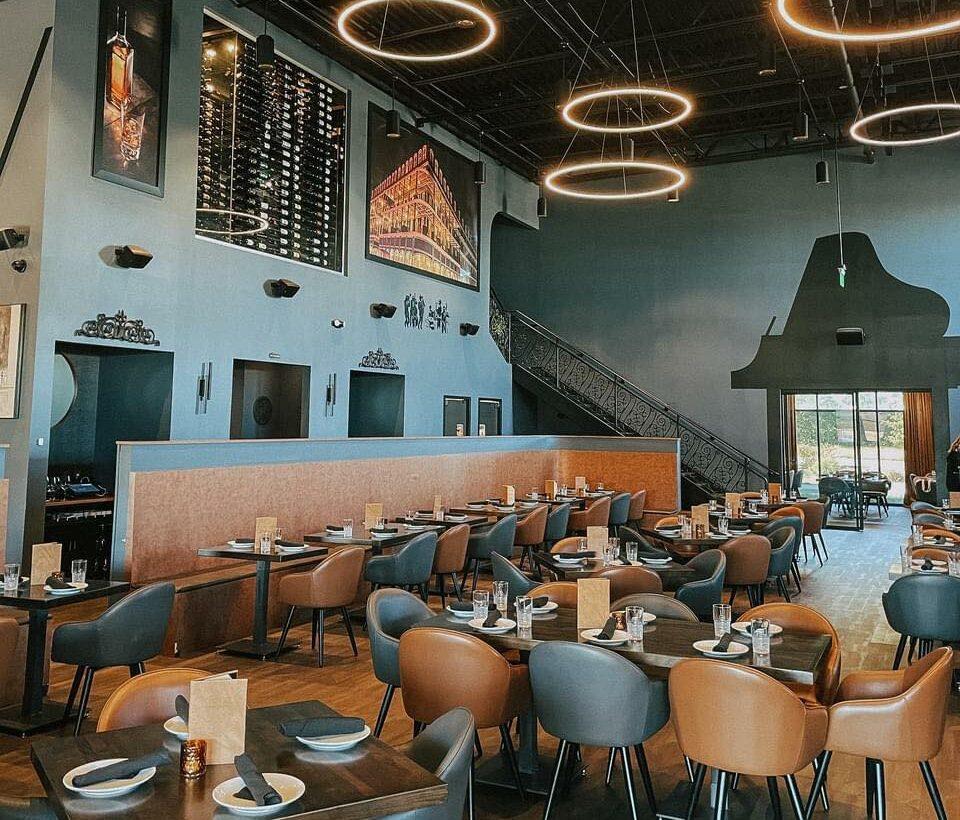Savor Genuine Oriental Food With a Pan-Asian Spin for a Culinary Journey
Beginning on a cooking trip with authentic Eastern food, boosted with a Pan-Asian spin, supplies an one-of-a-kind possibility to discover the abundant tapestry of flavors that specify the area's diverse cooking traditions. As you consider these luring recipes, consider the cultural stories and historic influences that form them, each bite using a story waiting to be found. pan asian dining Islamabad.

Discovering Pan-Asian Tastes
In the realm of worldwide gastronomy, Pan-Asian food stands out for its impressive diversity and the harmonious interaction of tastes from numerous Asian cultures. This culinary method commemorates the abundant traditions and special components found throughout the continent, creating a tapestry of tastes that is both interesting and enjoyable. Key to Pan-Asian cuisine is its ability to balance different flavors-- pleasant, salted, spicy, and sour-- while highlighting the quality and top quality of each component.
From the umami-rich soy sauce of Japan to the intense chili peppers of Thailand, Pan-Asian food supplies an extensive palette of flavors. These elements are commonly integrated in creative methods, enhancing recipes with layers of complexity. As an example, using great smelling herbs such as lemongrass and cilantro, usual in Vietnamese and Thai food, includes a refreshing brightness to dishes, while the incorporation of coconut milk provides a luscious, rich texture.
The emphasis on fresh fruit and vegetables and fragrant flavors ensures that each meal is not only a banquet for the taste yet likewise for the senses. Pan-Asian food welcomes restaurants to begin on a cooking trip, checking out the substantial and differed landscapes of Asian gastronomy with every bite.
Fusion Recipes to Attempt
While Pan-Asian food is celebrated for its typical flavors, the modern-day cooking landscape is significantly welcoming fusion dishes that blend these classic elements with influences from other regions. This cutting-edge method not only honors the abundant heritage of Eastern cookeries however likewise introduces unique preference experiences that interest contemporary palates.
A prime instance of such a fusion meal is the Korean-Mexican taco, where seasoned bulgogi beef is wrapped in a cozy tortilla, covered with kimchi and a hot gochujang-infused salsa. This combination marries the strong, full-flavored tastes of Korea with the dynamic, fresh aspects of Mexican food. In a similar way, sushi burritos have gotten popularity, amalgamating the delicate artistry of Japanese sushi with the hearty, hand-held comfort of a burrito, frequently featuring combination ingredients like tempura shrimp and avocado with a drizzle of wasabi mayo.
An additional noteworthy dish is Thai curry ramen, which infuses the velvety, aromatic spices of Thai curry right into the comforting broth of standard Japanese ramen, producing a harmonious mix that entices the senses. These fusion meals extend past plain novelty; they represent a cooking discussion between cultures, motivating expedition and technology worldwide of Pan-Asian food.
Crucial Components and Flavors
To really appreciate Pan-Asian cuisine, one need to understand the essential components and seasonings that create its structure. This varied culinary design draws from an abundant tapestry of Eastern practices, utilizing a harmonious blend of flavors and textures.
Aromatic aspects are essential, with lemongrass, garlic, and ginger being common across various Pan-Asian recipes. These components give a fragrant base that enhances the intricacy of flavors. Flavors such as star anise, cardamom, and cinnamon introduce warmth and character, echoing impacts from areas like China and India.

Cooking Techniques and Tips
Grasping the art of Pan-Asian cuisine needs experience with its distinct cooking methods, each adding to the lively tapestry of tastes this culinary tradition is commemorated for. asian fusion restaurant Central to these methods is the stir-fry, a fast cooking method that preserves the nutritional stability and vivid colors of active ingredients. Utilizing a frying pan, the stir-fry technique enables also warm circulation, necessary for achieving the particular texture and taste equilibrium of Pan-Asian meals.
One more basic strategy is steaming, particularly prevalent in Chinese food. This gentle approach maintains the natural tastes and nutrients of ingredients, making it suitable for fish and shellfish and vegetables. Dumplings, a precious staple, often take advantage of steaming, leading to soft, succulent textures.
Cooking, also important, imparts great smoky midsts to meals such as Korean bulgogi or Japanese yakitori (Instagrammable restaurants Islamabad). This strategy frequently includes seasoning components, allowing tastes to permeate deeply before cooking over an open flame or warmer
Last but not least, mastering the art of stabilizing tastes-- wonderful, sour, salty, bitter, and umami-- is crucial. Properly layering these components can boost a meal from ordinary to remarkable, supplying a complex and pleasing culinary experience that embodies the essence of Pan-Asian cuisine.
Eating Experiences Worldwide
Around the world, Pan-Asian cuisine uses an exceptional eating experience, commemorated for its rich tapestry of tastes and vibrant presentations. This cooking sensation has gone beyond cultural limits, capturing the hearts and tastes of food fanatics worldwide. In cosmopolitan cities like New York, London, and Sydney, Pan-Asian dining establishments act as fusions where culinary traditions from Thailand, Japan, China, and past merge, offering restaurants with an eclectic mix of meals that highlight the region's diversity.
The worldwide charm of Pan-Asian cuisine exists in its capacity to supply both credibility and innovation. Cooks masterfully wed standard active ingredients such as lemongrass, soy sauce, and miso with modern methods, leading to dishes that are both acquainted and refreshingly new. This blend enables restaurants to begin on a culinary journey that appreciates heritage while accepting modernity.
Moreover, dining experiences are boosted via attentively made settings that show the values of Pan-Asian looks. From minimal Japanese-inspired insides to vibrant Thai-themed rooms, each dining establishment provides an one-of-a-kind ambiance that matches the cooking offerings. As an outcome, patrons are not merely eating a dish however partaking in a social experience, making Pan-Asian eating a truly worldwide sensation.
Conclusion
The expedition of Pan-Asian cuisine provides a profound understanding of the intricate interaction of flavors and cooking traditions throughout Asia. By accepting fusion recipes such as Thai curry ramen and sushi burritos, the culinary journey not only highlights the adaptability of typical active ingredients yet additionally showcases innovative modern-day strategies. This gastronomic adventure, enriched by crucial flavors and cooking approaches, supplies an unique chance to appreciate the social variety and cooking creativity that define Pan-Asian cuisine on a worldwide scale.
Getting started on a culinary trip through genuine Eastern cuisine, enhanced with a Pan-Asian spin, uses an unique opportunity to check out the abundant tapestry of flavors that specify the region's varied culinary practices.In the world of worldwide gastronomy, Pan-Asian food stands out for its impressive diversity and the harmonious interaction of tastes from various Oriental cultures. Secret to Pan-Asian food is its ability to balance different flavors-- sweet, salted, spicy, and sour-- while highlighting the freshness and top quality of each ingredient.
